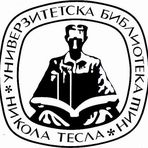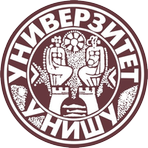Title
Primena homogenih i heterogenih unapređenih oksidacionih procesa za degradaciju tekstilne antrahinonske boje : doktorska disertacija
Creator
Radović, Miljana D.
Copyright date
2015
Object Links
Select license
Autorstvo-Nekomercijalno-Bez prerade 3.0 Srbija (CC BY-NC-ND 3.0)
License description
Dozvoljavate samo preuzimanje i distribuciju dela, ako/dok se pravilno naznačava ime autora, bez ikakvih promena dela i bez prava komercijalnog korišćenja dela. Ova licenca je najstroža CC licenca. Osnovni opis Licence: http://creativecommons.org/licenses/by-nc-nd/3.0/rs/deed.sr_LATN. Sadržaj ugovora u celini: http://creativecommons.org/licenses/by-nc-nd/3.0/rs/legalcode.sr-Latn
Language
Serbian
Cobiss-ID
Theses Type
PhD thesis
description
Datum odbrane: 07.07.2015.
Other responsibilities
mentor
Bojić, Aleksandar 1966-
član komisije
Onjia, Antonije
član komisije
Anđelković, Tatjana 1971-
član komisije
Rančić, Sofija 1960-
član komisije
Nikolić, Goran
Academic Expertise
Prirodno-matematičke nauke
Academic Title
-
University
Univerzitet u Nišu
Faculty
Prirodno-matematički fakultet
Group
Odsek za hemiju
Title translated
The use of homogeneous and heterogeneous advanced oxidation processes for degradation of textile anthraquinone dye
Publisher
Niš : [M. D. Radović]
Format
PDF/A (154 lista)
description
Umnoženo za odbranu.
Univerzitet u Nišu, Prirodno-matematički fakultet, 2015.
Bibliografija: listovi 136-141.
Rezime ; Summary.
description
Applied chemistry
Abstract (en)
The subject of this dissertation will be to compare the
degradation efficiency of anthraquinone dye Reactive Blue 19
(RB 19) by homogeneous (H2O2/UV, Fe2+/ H2O2 and
Fe2+/H2O2/UV) and heterogeneous (TiO2/UV, TiO2/UV/H2O2
and TiO2/UV/KBrO2) advanced oxidation processes. This study
will determine the optimal conditions for operating parameters
of mentioned processes to optimize their use and achieve
maximum efficiency. The mechanism of •ОH generation in
certain processes and its effects on anthraquinone dye RB 19
will be defined. With homogeneous advanced oxidation
processes, the results of the influence of initial peroxide
concentration showed its specific activatory or inhibitory effect,
which depends on its applied concentration. Optimal initial
concentration of peroxide at which a maximum efficiency of
the dye removal was obtained, was in the range from 20,0 to
40,0 mmol dm-3. With heterogeneous advanced oxidation
processes, the optimal concentration of TiO2 was 1,0 g dm-3,
and optimal concentration of electron acceptors (H2O2 and
KBrO3) was 30,0 mmol dm-3. With the increase of RB 19 dye
concentration, degradation efficiency decreases with all
investigated processes. Dye removal efficiency increases along
with the increase of UV ligut intensity, due to increase of
generated •OH radicals concentration. Presence of organic and
inorganic anions, typical constituents of surface waters and
wastewates, revealed that investigated anions affected removal
efficiency, which depends on their concentrations and initial pH
value. Separation and identification of degradation
intermediates will be carried out using LC-mass spectrometry
(LC/ESI/MSn), and the identification of the low-molecular
mineralization products will be carried out using ion
chromatography.
Authors Key words
Antrahinonske boje, reaktivne
dekolorizacija, degradacija, masena spektrometrija, reaktivne antrahinonske boje, unapređeni oksidacioni procesi
Authors Key words
advanced oxidation processes, decolorization, degradation, mass
spectrometry, reactive anthraquinone dyes
Classification
66.092.094.3
Type
Elektronska teza
Abstract (en)
The subject of this dissertation will be to compare the
degradation efficiency of anthraquinone dye Reactive Blue 19
(RB 19) by homogeneous (H2O2/UV, Fe2+/ H2O2 and
Fe2+/H2O2/UV) and heterogeneous (TiO2/UV, TiO2/UV/H2O2
and TiO2/UV/KBrO2) advanced oxidation processes. This study
will determine the optimal conditions for operating parameters
of mentioned processes to optimize their use and achieve
maximum efficiency. The mechanism of •ОH generation in
certain processes and its effects on anthraquinone dye RB 19
will be defined. With homogeneous advanced oxidation
processes, the results of the influence of initial peroxide
concentration showed its specific activatory or inhibitory effect,
which depends on its applied concentration. Optimal initial
concentration of peroxide at which a maximum efficiency of
the dye removal was obtained, was in the range from 20,0 to
40,0 mmol dm-3. With heterogeneous advanced oxidation
processes, the optimal concentration of TiO2 was 1,0 g dm-3,
and optimal concentration of electron acceptors (H2O2 and
KBrO3) was 30,0 mmol dm-3. With the increase of RB 19 dye
concentration, degradation efficiency decreases with all
investigated processes. Dye removal efficiency increases along
with the increase of UV ligut intensity, due to increase of
generated •OH radicals concentration. Presence of organic and
inorganic anions, typical constituents of surface waters and
wastewates, revealed that investigated anions affected removal
efficiency, which depends on their concentrations and initial pH
value. Separation and identification of degradation
intermediates will be carried out using LC-mass spectrometry
(LC/ESI/MSn), and the identification of the low-molecular
mineralization products will be carried out using ion
chromatography.
“Data exchange” service offers individual users metadata transfer in several different formats. Citation formats are offered for transfers in texts as for the transfer into internet pages. Citation formats include permanent links that guarantee access to cited sources. For use are commonly structured metadata schemes : Dublin Core xml and ETUB-MS xml, local adaptation of international ETD-MS scheme intended for use in academic documents.


